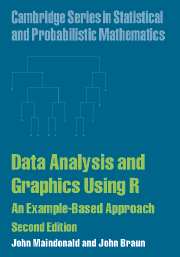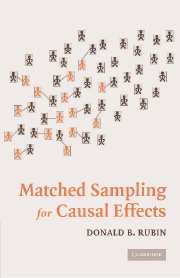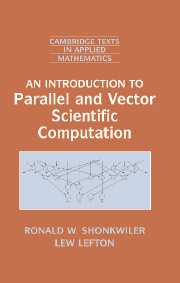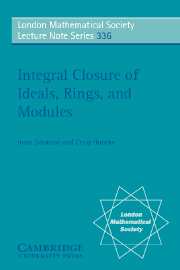Leon Harkleroad
The Math Behind the Music
Series: Outlooks
Hardback (ISBN-13: 9780521810951 | ISBN-10: 0521810957)
Also available in Paperback
For price and ordering options, inspection copy requests, and
reading lists please select:
UK, Europe, Middle East and Africa | Americas | Asia | Australia
and New Zealand
Mathematics has been used for centuries to describe, analyze, and
create music. In this book, Leon Harkleroad explores the math
related aspects of music from its acoustical bases to
compositional techniques to music criticism, touching on
・ overtones, scales, and tuning systems
・ the musical dice game attributed to Mozart and Haydn
・ the several-hundred-year-old style of bell-playing known as
ringing the changes
・ the twelve-tone school of composition that strongly
influenced music throughout the 20th century and many other
topics
involving mathematical ideas from probability theory to Fouries
series to group theory. He also relates some cautionary tales of
misguided attempts to mix music and mathematics. Both the
mathematical and the musical concepts are described in an
elementary way, making the book accessible to general readers as
well as to mathematicians and musicians of all levels. The book
is accompanied by an audio CD of musical examples.
・ Wide variety of topics never before gathered in one place
・ CD ROM of musical examples that illustrate points made in the
text
・ Elementary text with extra material in sidebars for more
advanced readers
Table of contents
John Maindonald / Australian National University, Canberra
John Braun / University of Western Ontario
Data Analysis and Graphics Using R, 2nd Edition
An Example-based Approach
 Series: Cambridge Series in Statistical and Probabilistic Mathematics
Series: Cambridge Series in Statistical and Probabilistic Mathematics
Hardback (ISBN-13: 9780521861168 | ISBN-10: 0521861160)
For price and ordering options, inspection copy requests, and
reading lists please select:
UK, Europe, Middle East and Africa | Americas | Asia | Australia
and New Zealand
Join the revolution ignited by the ground-breaking R system!
Starting with an introduction to R, covering standard regression
methods, then presenting more advanced topics, this book guides
users through the practical and powerful tools that the R system
provides. The emphasis is on hands-on analysis, graphical display
and interpretation of data. The many worked examples, taken from
real-world research, are accompanied by commentary on what is
done and why. A website provides computer code and data sets,
allowing readers to reproduce all analyses. Updates and solutions
to selected exercises are also available. Assuming only basic
statistical knowledge, the book is ideal for research scientists,
final-year undergraduate or graduate level students of applied
statistics, and practising statisticians. It is both for learning
and for reference. This revised edition reflects changes in R
since 2003 and has new material on survival analysis, random
coefficient models, and the handling of high-dimensional data.
・ Practical, hands-on, example-based approach deals with real-world
issues
・ Extensive use of graphs for exploration of data and
interpretation of analyses
・ R code, data sets, updates and exercise solutions, all
provided on companion website
Contents
Preface; 1. A brief introduction to R; 2. Styles of data
analysis; 3. Statistical models; 4. An introduction to formal
inference; 5. Regression with a single predictor; 6. Multiple
linear regression; 7. Exploiting the linear model framework; 8.
Generalized linear models and survival analysis; 9. Time series
models; 10. Multi-level models and repeated measures; 11. Tree-based
classification and regression; 12. Multivariate data exploration
and discrimination; 13. Regression on principal component or
discriminant scores; 14. The R system - additional topics;
Epilogue - models; References; Index of R symbols and functions;
Index of terms; Index of names
Donald B. Rubin / Harvard University, Massachusetts
Matched Sampling for Causal Effects
 Hardback (ISBN-13: 9780521857628 | ISBN-10: 0521857627)
Hardback (ISBN-13: 9780521857628 | ISBN-10: 0521857627)
Paperback (ISBN-13: 9780521674362 | ISBN-10: 0521674360)
Matched sampling is often used to help assess the causal effect
of some exposure or intervention, typically when randomized
experiments are not available or cannot be conducted. This book
presents a selection of Donald B. Rubin's research articles on
matched sampling, from the early 1970s, when the author was one
of the major researchers involved in establishing the field, to
recent contributions to this now extremely active area. The
articles include fundamental theoretical studies that have become
classics, important extensions, and real applications that range
from breast cancer treatments to tobacco litigation to studies of
criminal tendencies. They are organized into seven parts, each
with an introduction by the author that provides historical and
personal context and discusses the relevance of the work today. A
concluding essay offers advice to investigators designing
observational studies. The book provides an accessible
introduction to the study of matched sampling and will be an
indispensable reference for students and researchers in
statistics, epidemiology, medicine, economics, education,
sociology, political science, and anyone else doing empirical
research to evaluate the causal effects of interventions.
・ This is the only book devoted to the topic of matched
sampling
・ There are important fundamental theoretical results presented
as well as real applications
・ The author is in the top ten cited writers in mathematics in
the world, according to ISI Science Watch
Contents
Part I. The Early Years and the Influence of William G. Cochran:
1. William G. Cochran's contributions to the design, analysis,
and evaluation of observational studies; 2. Controlling bias in
observational studies: a review William G. Cochran; Part II.
Univariate Matching Methods and the Dangers of Regression
Adjustment: 3. Matching to remove bias in observational studies;
4. The use of matched sampling and regression adjustment to
remove bias in observational studies; 5. Assignment to treatment
group on the basis of a covariate; Part III. Basic Theory of
Multivariate Matching: 6. Multivariate matching methods that are
equal percent bias reducing, I: Some examples; 7. Multivariate
matching methods that are equal percent bias reducing, II:
Maximums on bias reduction for fixed sample sizes; 8. Using
multivariate matched sampling and regression adjustment to
control bias in observational studies; 9. Bias reduction using
Mahalanobis-metric matching; Part IV. Fundamentals of Propensity
Score Matching: 10. The central role of the propensity score in
observational studies for causal effects Paul R. Rosenbaum; 11.
Assessing sensitivity to an unobserved binary covariate in an
observational study with binary outcome Paul R. Rosenbaum; 12.
Reducing bias in observational studies using subclassification on
the propensity score Paul R. Rosenbaum; 13. Constructing a
control group using multivariate matched sampling methods that
incorporate the propensity score Paul Rosenbaum; 14. The bias due
to incomplete matching Paul R. Rosenbaum; Part V: Affinely
Invariant Matching Methods with Ellipsoidally Symmetric
Distributions, Theory and Methodology: 15. Affinely invariant
matching methods with ellipsoidal distributions Neal Thomas; 16.
Characterizing the effect of matching using linear propensity
score methods with normal distributions Neal Thomas; 17. Matching
using estimated propensity scores: relating theory to practice
Neal Thomas; 18. Combining propensity score matching with
additional adjustments for prognostic covariates; Part VI. Some
Applied Contributions: 19. Causal inference in retrospective
studies Paul Holland; 20. The design of the New York school
choice scholarships program evaluation Jennifer Hill and Neal
Thomas; 21. Estimating and using propensity scores with partially
missing data Ralph D'Agostino Jr.; 22. Using propensity scores to
help design observational studies: application to the tobacco
litigation; Part VII. Some Focused Applications: 23. Criminality,
aggression and intelligence in XYY and XXY men H. A. Witkin; 24.
Practical implications of modes of statistical inference for
causal effects and the critical role of the assignment mechanism;
25. In utero exposure to phenobarbital and intelligence deficits
in adult men June Reinisch, Stephanie Sanders, and Erik
Mortensen; 26. Estimating causal effects from large data sets
using propensity scores; 27. On estimating the causal effects of
DNR orders Martin McIntosh.
Ronald W. Shonkwiler / Georgia Institute of Technology, Atlanta
Lew Lefton / Georgia Institute of Technology, Atlanta
An Introduction to Parallel and Vector Scientific Computation
 Series: Cambridge Texts in Applied Mathematics (No. 41)
Series: Cambridge Texts in Applied Mathematics (No. 41)
Hardback (ISBN-13: 9780521864787 | ISBN-10: 052186478X)
Paperback (ISBN-13: 9780521683371 | ISBN-10: 0521683378)
In this text, students of applied mathematics, science and
engineering are introduced to fundamental ways of thinking about
the broad context of parallelism. The authors begin by giving the
reader a deeper understanding of the issues through a general
examination of timing, data dependencies, and communication.
These ideas are implemented with respect to shared memory,
parallel and vector processing, and distributed memory cluster
computing. Threads, OpenMP, and MPI are covered, along with code
examples in Fortran, C, and Java. The principles of parallel
computation are applied throughout as the authors cover
traditional topics in a first course in scientific computing.
Building on the fundamentals of floating point representation and
numerical error, a thorough treatment of numerical linear algebra
and eigenvector/eigenvalue problems is provided. By studying how
these algorithms parallelize, the reader is able to explore
parallelism inherent in other computations, such as Monte Carlo
methods.
・ Contains exercises and programming problems as well as
suggestions for term projects
・ Use of directed acyclic graphs helps students visualize
timing and data dependencies which can be critical when using
parallel code
・ Instruction on programming parallel, vector and distributed
memory machines in Fortran, C and Java
Contents
Part I. Machines and Computation: 1. Introduction - the nature of
high performance computation; 2. Theoretical considerations -
complexity; 3. Machine implementations; Part II. Linear Systems:
4. Building blocks - Floating point numbers and basic linear
algebra; 5. Direct methods for linear systems and LU
decomposition; 6. Direct methods for systems with special
structure; 7. Error analysis and QR decomposition; 8. Iterative
methods for linear systems; 9. Finding eigenvalues and
eigenvectors; Part III. Monte Carlo Methods: 10. Monte Carlo
Simulation; 11. Monte Carlo optimization; Appendix: Programming
examples.
Irena Swanson / Reed College, Portland
Craig Huneke / University of Kansas
Integral Closure of Ideals, Rings, and Modules
 Series: London Mathematical Society Lecture Note Series (No. 336)
Series: London Mathematical Society Lecture Note Series (No. 336)
Paperback (ISBN-13: 9780521688604 | ISBN-10: 0521688604)
Integral closure has played a role in number theory and algebraic
geometry since the nineteenth century, but a modern formulation
of the concept for ideals perhaps began with the work of Krull
and Zariski in the 1930s. It has developed into a tool for the
analysis of many algebraic and geometric problems. This book
collects together the central notions of integral closure and
presents a unified treatment. Techniques and topics covered
include: behavior of the Noetherian property under integral
closure, analytically unramified rings, the conductor, field
separability, valuations, Rees algebras, Rees valuations,
reductions, multiplicity, mixed multiplicity, joint reductions,
the Briancon-Skoda theorem, Zariski's theory of integrally closed
ideals in two-dimensional regular local rings, computational
aspects, adjoints of ideals and normal homomorphisms. With many
worked examples and exercises, this book will provide graduate
students and researchers in commutative algebra or ring theory
with an approachable introduction leading into the current
literature.
・ First book to collect the material on integral closures into
a unified treatment
・ Ideal for graduate students and researchers in commutative
algebra or ring theory, with many worked examples and exercises
・ Provides a one-stop shop for newcomers and experts
Contents
Table of basic properties; Notation and basic definitions;
Preface; 1. What is the integral closure; 2. Integral closure of
rings; 3. Separability; 4. Noetherian rings; 5. Rees algebras; 6.
Valuations; 7. Derivations; 8. Reductions; 9. Analytically
unramified rings; 10. Rees valuations; 11. Multiplicity and
integral closure; 12. The conductor; 13. The Briancon-Skoda
theorem; 14. Two-dimensional regular local rings; 15. Computing
the integral closure; 16. Integral dependence of modules; 17.
Joint reductions; 18. Adjoints of ideals; 19. Normal
homomorphisms; Appendix A. Some background material; Appendix B.
Height and dimension formulas; References; Index.
 Series: Cambridge Series in Statistical and Probabilistic Mathematics
Series: Cambridge Series in Statistical and Probabilistic Mathematics Hardback (ISBN-13: 9780521857628 | ISBN-10: 0521857627)
Hardback (ISBN-13: 9780521857628 | ISBN-10: 0521857627) Series: Cambridge Texts in Applied Mathematics (No. 41)
Series: Cambridge Texts in Applied Mathematics (No. 41) Series: London Mathematical Society Lecture Note Series (No. 336)
Series: London Mathematical Society Lecture Note Series (No. 336)